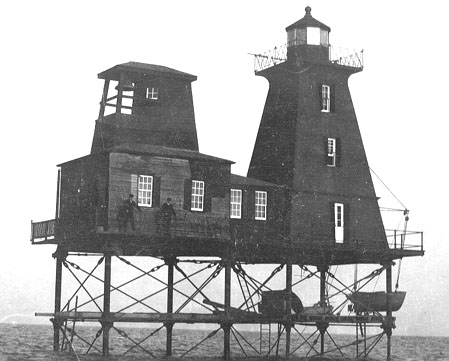
Kate Walker here, keeping the light on Robbins Reef. One could write a whole book about hurricanes, particularly in the Gulf of Mexico.
In October 1867 a hurricane sheared off the legs of the screwpile tower at Shell Keys and the ironwork toppled. The only keeper on board was Seth Jones. His body was never found. The site of the tower was under four feet of water.
At Southwest Reef, Louisiana, it was hoped that a short square pyramidal structure enclosed in iron plates would have more resistance to the frequent hurricanes along the Gulf coast that a tall skeletal tower. Although the Southwest Reef light withstood heavy winds, it still fell prey to
tidal surges. The 1873 Annual Report of the Light-House Board reported: “The first floor and gallery are 11 feet 3 inches above mean low water. Occasionally extraordinary tides, caused by southerly gales, . . . rise nearly to the level of the floor and cause the sea to beat with all its force against the lower part of the buildings.”
Subsequently the 1875 Annual Report of the Light-House Board stated that “The light-house was detached from its foundation, the tower was raised ten feet, and four cast-iron columns were inserted and bolted to the top of the four foundation piles; the tower was then lowered into its place and bolted to the columns; the whole rigidly secured by a system of diagonal
bracing. The [new] fog signal building rests on a foundation of four cast-iron hollow screw-piles, and is connected with the light-house by means
of a covered passageway.”
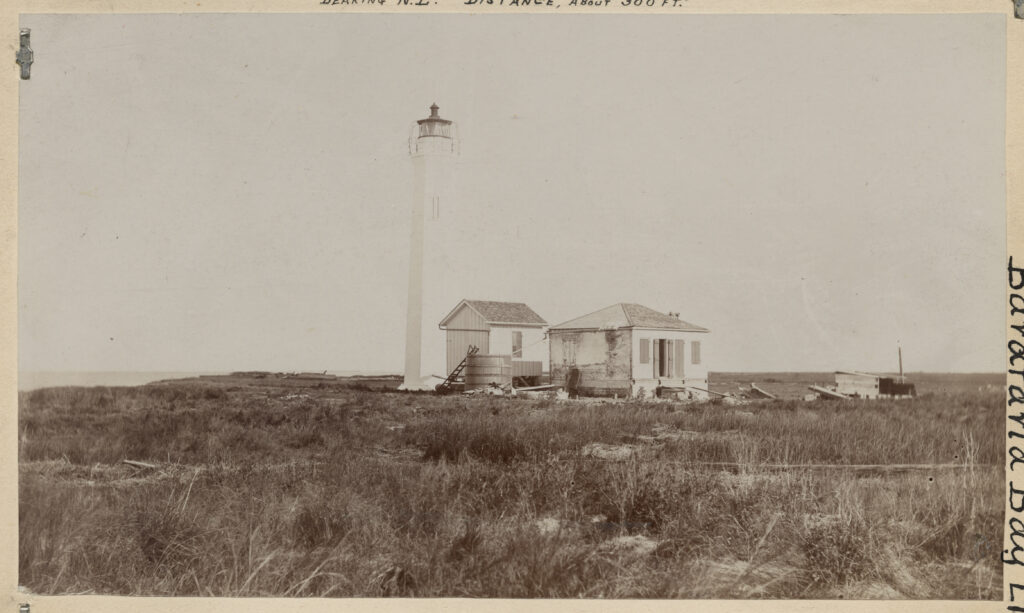
While John and I were keeping Robbins Reef, the disastrous hurricane of October 1893 almost totally destroyed the Barataria Bay lighthouse. Of the approximately 1,500 local inhabitants, more than half died or disappeared during the storm.
A severe storm in 1866 whipped up an eight-foot tide which surrounded the Sabine Pass Light with five feet of water. Every building except the lighthouse was washed away. A hurricane in 1915 forced the keepers to turn the revolving lens by hand when tower vibrations put the clockwork out of order.
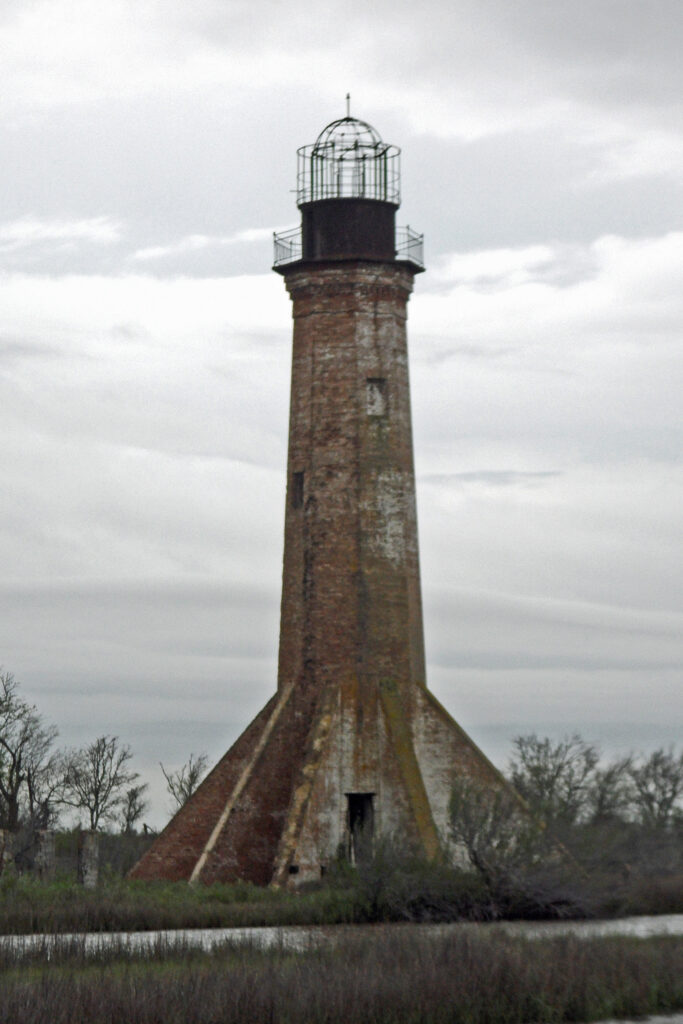
The great hurricane of 1900, which virtually leveled the city of Galveston, furiously pounded the Bolivar light tower. The tower became a refuge for all who could reach its iron door and stairs. Passengers from a stranded train were among the first to wade to the tower when tides covered Bolivar Point a foot or more deep. In all 125 terrified neighbors and travelers huddled on the iron stairs through of the storm. They were without fresh water. When the winds and tides subsided, the lighthouse was surrounded by dozens of bloated bodies. Keeper Clairborne fed and clothed the survivors, exhausting his month’s supply of food at the station.
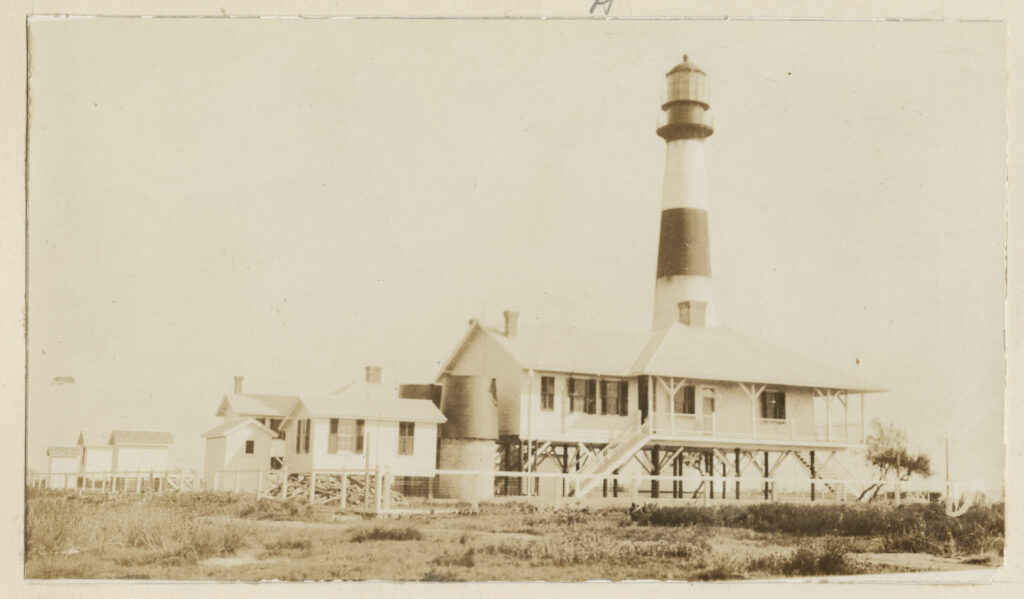
Calamity again struck again in 1915. Claireborne reported the water higher and the wind stronger than in the 1900 hurricane. Practically every family on the point immediately headed for the lighthouse. 60 people sheltered in the tower, which shook like a reed. Water rose neck-deep at the bottom of the tower and tore open the iron door. Assistant keeper J.P. Brooks, tethered by a rope so his body could be hauled back in, struggled to the door and secured it against the flood. When the lens clockwork was put out of commission by the swaying of the tower, the keepers turned the lens by hand. Severe tower convulsions eventually made it impossible to rotate the lens. Waves destroyed the brick oil house, carrying away the entire supply of oil.
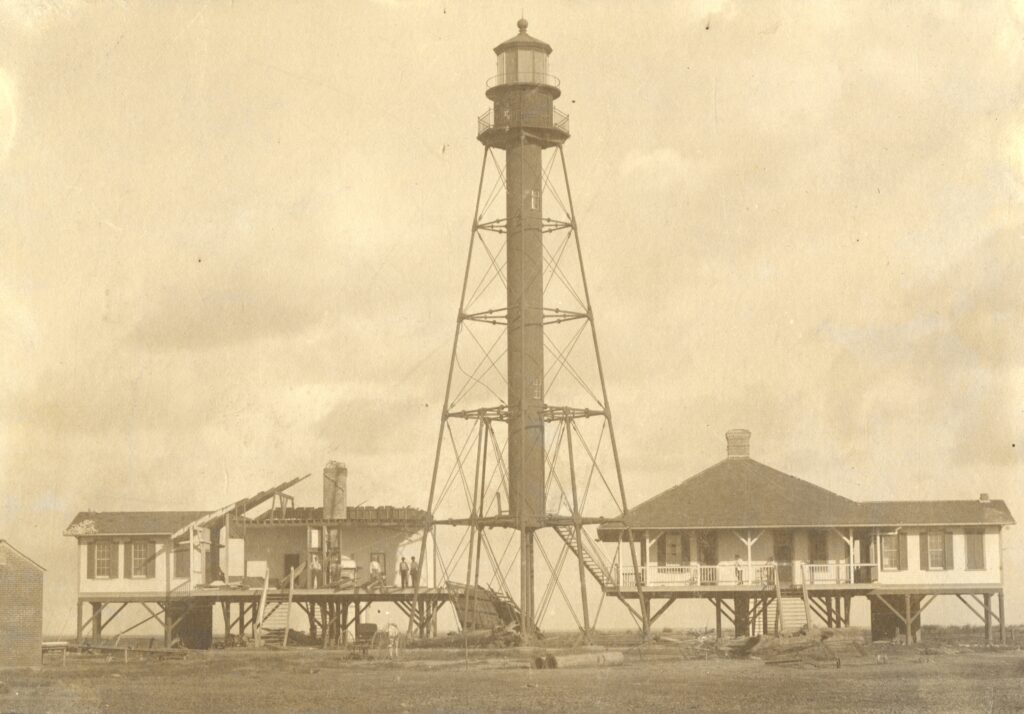
In the 1915 hurricane the Brazos River light tower shook so hard that the revolving mechanism was put out a working order. The lens, weighing many hundreds of pounds, floated in a bath of mercury to allow frictionless movement. More than a gallon of the toxic liquid metal splashed out of the reservoir and spattered onto the floor. The keepers turned the light by hand for two nights.
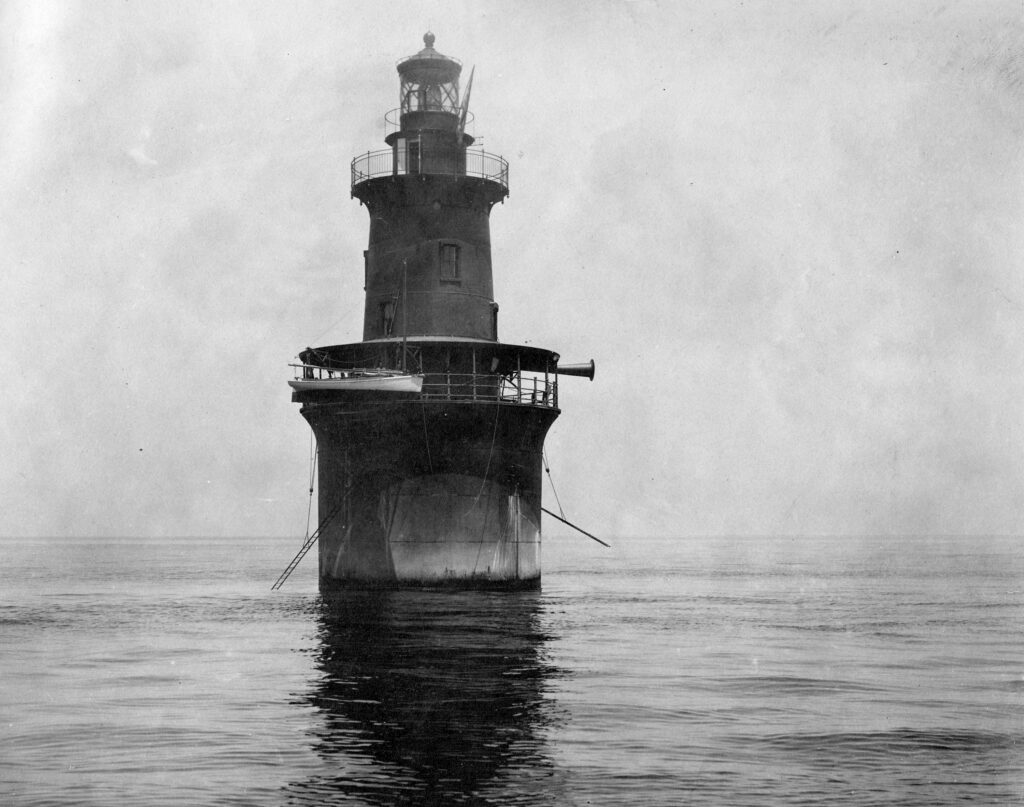
The 1915 hurricane also cast heavy seas against the caisson lighthouse on Sabine Bank. Waves stripped the hatches off the gallery level, stove in the storm shutters, and tore most of the iron gallery from the tower. The keepers maintained the light during the storm and for days afterward. They were finally forced ashore by thirst; the water tanks had been washed away
during the storm.
************

Information is from David Cipra, Lighthouses Lightships, and the Gulf of Mexico and Annual Reports of the Light-House Board.
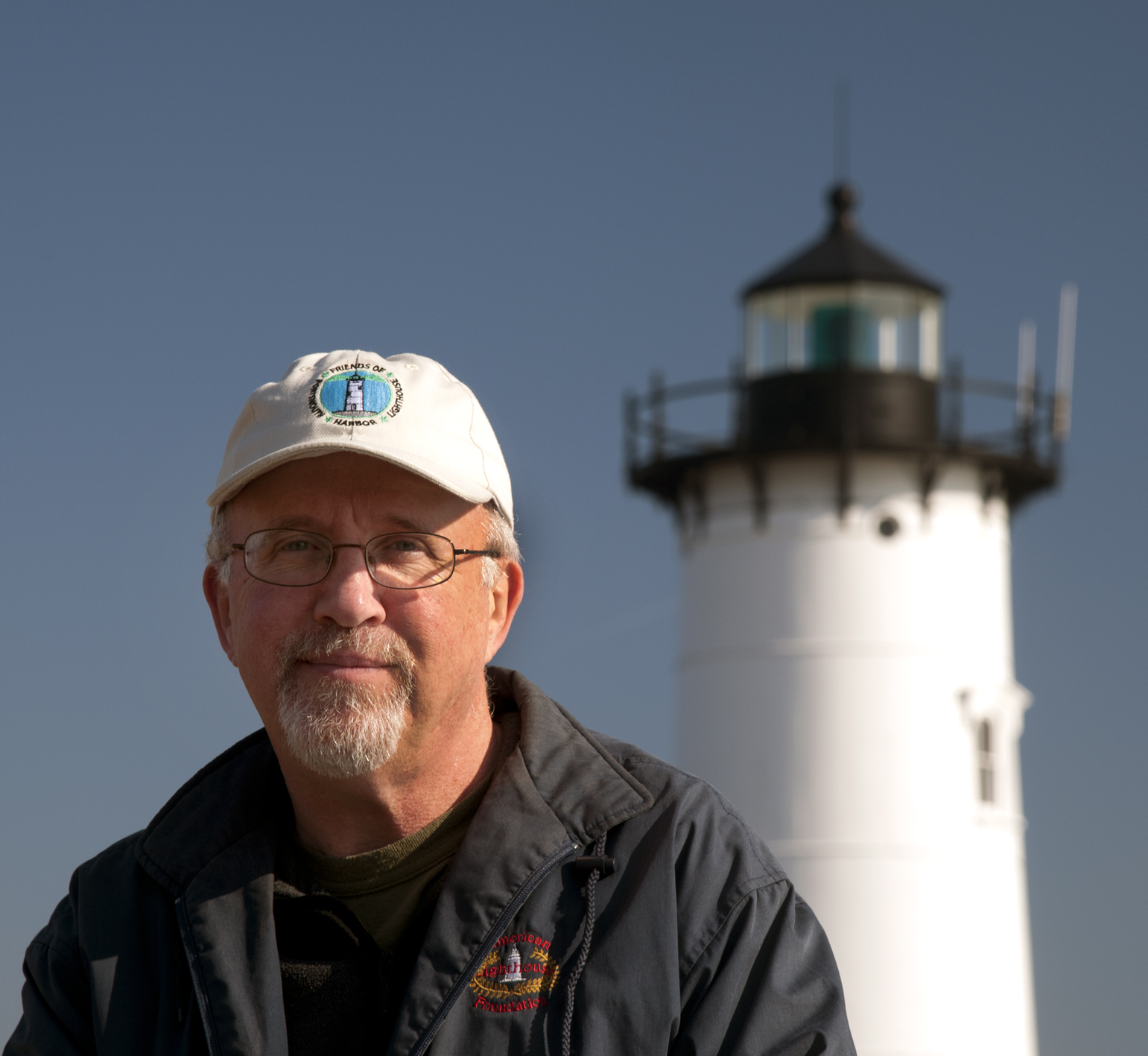
Jeremy D’Entremont is the author of more than 20 books and hundreds of articles on lighthouses and maritime history. He is the president and historian for the American Lighthouse Foundation and founder of Friends of Portsmouth Harbor Lighthouses, and he has lectured and narrated cruises throughout the Northeast and in other regions. He is also the producer and host of the U.S. Lighthouse Society podcast, “Light Hearted.” He can be emailed at Jeremy@uslhs.org

